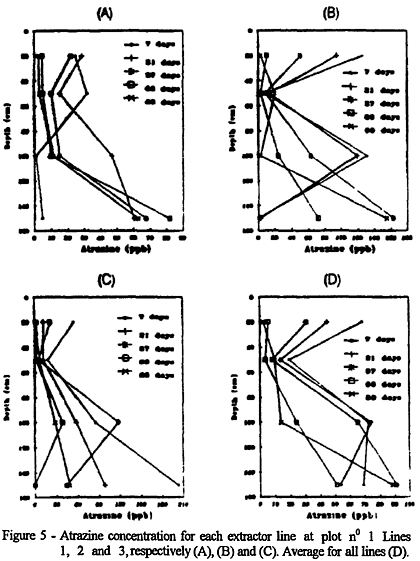Atrazine displacement was studied in a soil profile as a function of water movement and time after herbicide application, taking into account possible influence of preferential flow on leaching. The experiment consisted of two 7 x 7m plots of a dark red latosol (Kanduidalfic Eutrudox), located at Piracicaba, SP, Brazil (22º 43'S and 47º 25'W), 250km inside continent, at an altitude of 580m. One plot was previously treated with 1,000 kg/ha of lime, in order to increase base saturation to 88%, and 500kg/ha of gypsum. Each plot was instrumented with tensiometers, neutron probe access tubes and soil solution extractors, in order to monitor water and atrazine flows. Atrazine was applied at the high rate of 6 kg/ha of active principle. Results showed intensive leaching of atrazine in the whole soil profile, up to the instrumented depth of 150cm, already ate the first sampling, seven days after herbicide application. The limed plot showed much higher atrazine leaching losses than the other plot. The atrazine adsorption capacity of the soil is very low, its maximum value being of the order of 10%, for the 0-15cm surface layer.
atrazine; leaching; preferential flow; adsorption; herbicide; tropical soil








